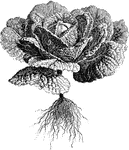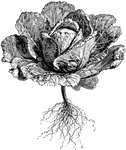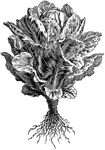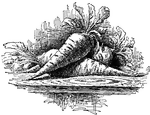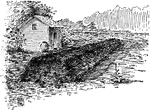
Long Yellow Beetroot
Beetroot is a vegetable usually used in salad. The deeply colored roots are the most desired part of…

White Leaf Beetroot
The leaves of the beetroot are also edible. The leaves can be a substitute for sea-kale and spinach…
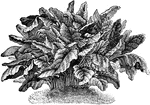
Beta Hortensis Metallica, or Victoria Beet
Victoria Beet is the common name of beta hortensis metallica. Used mostly for ornamental purposes, the…
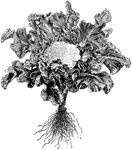
Broccoli
Broccoli is a cultivated variety of cabbage. The fleshy head is edible. Broccoli is in season November…
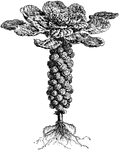
Brussels Sprouts
Brussels sprouts are a cultivated variety of cabbage. The heads grow close together on the stem.
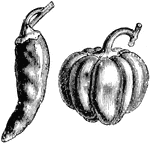
Fruit of Long and Round Capsicums
Types of capsicums include chili, long red, long yellow, small red cayenne, round red, and round yellow.…

Fennel
Fennel is a vegetable. Fennel leaves are usually used for garnish. The stalks are sometimes blanched…

Garlic
Garlic is a vegetable used for many culinary purposes. Garlic is very rarely served raw because of it's…

Horseradish
The goal of growing horseradish is to obtain roots as large as possible before they are old enough to…

Kohlrabi
Kohlrabi is a distinct vegetable. It is often described as a cross between a cabbage and a turnip. The…

Leek
Leeks are cultivated for the lower part of its leaves. The lower parts of the leaves from a sort of…

Upper Portion of Plant of Lens Esculenta
The common name of lens is lentils. Lens esculenta is the edible variety. The flowers are small and…

Cabbage Lettuce
Cabbage lettuces have broad, rounded leaves forming a low, spreading head nearly close on the ground.
Millipede
Millipedes are usually cylindrical. The origins of the legs are usually brought very close to the middle…
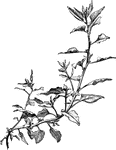
Branchlet of New Zealand Spinach
New Zealand Spinach is cultivated for the use of its young leaves. New Zealand Spinach can be substituted…

Deep Blood-Red Onions
Deep blood-red onions have bulbs of medium size. The inner part is pure white. The outer coats vary…

Early White Naples Onions
Early white Naples onions are an early form of the silver skinned section. The little bulbs are produced…
James's Keeping Onion
The James's keeping onion has a pear shape. It is one of the longest keeping varieties of onion.

Naples Giant Rocca Onion
The Naples giant rocca onion has a roundish, large bulb. The flesh is thick and white.
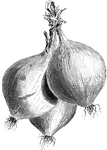
Trebons Onions
Trebons onions have large bulbs that taper to the stalk or neck. The flesh is pale and soft.

Queen Onions
The queen onion is a small and very early variety of the silver-skinned section. The bulbs are very…

White Spanish Onions
The white Spanish onion has large bulbs that are somewhat flattened. The base is broad and sometimes…

Yellow Danvers Onion
The yellow danvers onion has medium sized bulbs with a small base. The neck is fine and slender. The…
Parsnip
Parsnip roots are eaten as a vegetable. Pictured is a parsnip with a portion of its leaves removed.

Globe Artichoke
Globe artichokes is grown for its edible flower heads. It is a strong, thistle-like plant.
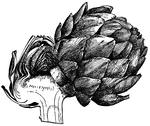
Edible Heads of Artichoke
The edible parts of the artichoke are the the fleshy receptacle of the flower head and the thickened…

Tuber of Jerusalem Artichoke
Jerusalem artichoke is the tuber of a sunflower. The flower produces white, edible tubers. It can be…

Bassano Beet
The bassano beet has flesh that is mixed white and light red. It is an old-time, early variety.
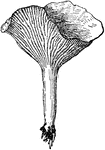
Cantharellus Cibarius
Cantharellus cibarius is known as the chanterelle mushroom. It is edible and commonly used as a vegetable.…

Land Crab
The land crab is a member of the family 'Gecarcinidae', and is remarkable for the curious modification…

Lemming
A lemming is a small, yellowish-brown rodent, closely related to the vole, and belonging to the genus…
